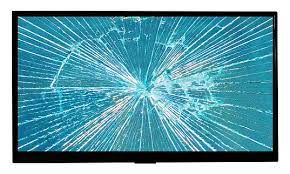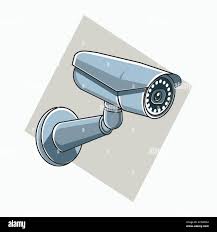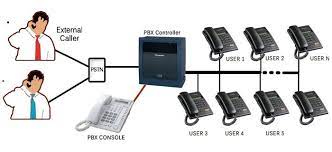Screens have become an integral part of our daily lives. From smartphones and tablets to laptops and televisions, screens are everywhere, providing us with information, entertainment, and connectivity. As technology continues to advance, screens have evolved to offer better visuals, enhanced functionality, and improved user experiences.
One of the most significant developments in screen technology is the transition from traditional cathode ray tube (CRT) displays to flat-panel displays. This shift has resulted in thinner and lighter screens that consume less power while delivering sharper images and vibrant colors. Flat-panel displays come in various forms such as liquid crystal display (LCD), light-emitting diode (LED), organic light-emitting diode (OLED), and plasma displays.
LCD screens are widely used due to their affordability and versatility. They consist of a layer of liquid crystals sandwiched between two glass plates. When an electric current passes through the liquid crystals, they align to control the amount of light passing through, creating the desired image or video.
LED screens are a more advanced version of LCD screens. Instead of using fluorescent bulbs for backlighting, LED screens use light-emitting diodes as their light source. This results in better contrast ratios, improved color accuracy, and energy efficiency.
OLED screens take display technology even further by eliminating the need for backlighting altogether. Each pixel in an OLED screen emits its own light when an electric current is applied. This allows for deeper blacks, wider viewing angles, faster response times, and thinner designs compared to LCD or LED screens.
Screens have also become more interactive with the introduction of touchscreens. Touchscreens enable users to directly interact with the displayed content by tapping, swiping, or pinching on the screen’s surface. This technology has revolutionized smartphones and tablets by providing intuitive navigation and seamless user experiences.
Furthermore, curved screens have gained popularity in recent years. Curved displays wrap around the viewer’s field of vision, creating a more immersive experience and reducing eye strain. These screens are commonly found in gaming monitors and high-end televisions, enhancing the visual impact of movies, games, and other multimedia content.
As screens continue to evolve, we can expect even more exciting developments in the future. Technologies such as virtual reality (VR) and augmented reality (AR) are pushing the boundaries of screen experiences by immersing users in virtual worlds or overlaying digital information onto the real world.
In conclusion, screens have become an essential part of our modern lives, providing us with information, entertainment, and connectivity. With advancements in technology, we now have thinner, lighter, and more visually impressive screens that offer enhanced functionality and improved user experiences. Whether it’s a smartphone in our pocket or a large curved television in our living room, screens continue to shape the way we interact with the digital world.
6 Helpful Tips for Screen Usage to Reduce Eye Strain and Enhance Comfort
- Take regular breaks from your screen to reduce eye strain.
- Adjust the brightness and contrast of your screen to a comfortable level.
- Use a glare filter on your screen if you work in an area with strong lighting or sunlight.
- Make sure that the top of the monitor is at eye level or slightly below it for optimal posture and comfort while working.
- Ensure that the distance between yourself and the monitor is at least an arm’s length away for proper viewing distance and comfort when using a computer or laptop for extended periods of time.
- Clean your screen regularly with a soft cloth to remove dust, dirt, fingerprints, etc., which can cause image distortion or discolouration over time if left unchecked
Take regular breaks from your screen to reduce eye strain.
In today’s digital age, screens have become an inseparable part of our lives. Whether it’s for work, entertainment, or staying connected with others, we spend a significant amount of time glued to our screens. However, this prolonged screen time can take a toll on our eyes and lead to eye strain and discomfort.
One simple yet effective tip to alleviate eye strain is to take regular breaks from your screen. Our eyes are not designed to focus on a single point for extended periods, especially when staring at a bright screen. By taking short breaks every hour or so, you give your eyes the much-needed rest they deserve.
During these breaks, try to engage in activities that don’t involve looking at a screen. Take a walk outside and enjoy some fresh air, stretch your body to relieve tension, or simply close your eyes and practice deep breathing exercises. These activities not only give your eyes a break but also help relax your mind and rejuvenate your overall well-being.
Additionally, it’s essential to blink regularly while using screens. Studies have shown that we tend to blink less frequently when focusing on digital content, which can lead to dry and irritated eyes. Remind yourself to blink consciously or use artificial tears if necessary to keep your eyes moist and comfortable.
Adjusting the brightness and contrast settings on your screen can also make a difference in reducing eye strain. Too much brightness or contrast can strain your eyes, while settings that are too low may cause you to squint. Find the optimal settings that feel comfortable for you and adjust accordingly.
Remember that taking breaks from screens doesn’t mean completely avoiding them; it’s about finding a balance between screen time and rest periods for your eyes. By incorporating regular breaks into your daily routine, you can minimize eye strain, improve focus, and maintain healthy vision in the long run.
So next time you find yourself engrossed in front of a screen for an extended period, remember the importance of taking regular breaks. Your eyes will thank you for it, and you’ll be able to enjoy your screen time with greater comfort and ease.
Adjust the brightness and contrast of your screen to a comfortable level.
Adjusting the brightness and contrast of your screen is a simple yet effective tip to ensure a comfortable viewing experience. Whether you’re working on a laptop, using a desktop computer, or even watching content on your television, finding the right balance of brightness and contrast can make a significant difference in reducing eye strain and enhancing visual clarity.
Firstly, let’s talk about brightness. A screen that is too bright can cause discomfort, especially when viewing in low-light environments. On the other hand, a screen that is too dim may strain your eyes as you struggle to see the content clearly. Adjusting the brightness level to match your surroundings is crucial for optimal viewing comfort. In brightly lit rooms, increase the brightness to ensure visibility without causing excessive glare. In darker environments, reduce the brightness to avoid eye fatigue and maintain a comfortable viewing experience.
Secondly, let’s consider contrast. Contrast refers to the difference between light and dark elements on your screen. Adjusting contrast allows for better differentiation between colors and enhances image clarity. When contrast is set too high, it can lead to overly harsh or washed-out visuals. Conversely, setting contrast too low may result in loss of detail and make it difficult to distinguish between different shades.
To find the ideal balance of brightness and contrast for your screen, start by adjusting them to default settings if you haven’t customized them before. From there, gradually increase or decrease these settings until you achieve a comfortable level that suits both your environment and personal preference.
Remember that everyone’s eyes are unique, so what works for one person may not work for another. It’s essential to listen to your own comfort levels when adjusting these settings. If you notice any eye strain or discomfort while using your screen, take breaks regularly and consider making further adjustments as needed.
By taking a few moments to adjust the brightness and contrast of your screen to a comfortable level, you can significantly improve your overall viewing experience while minimizing potential eye strain. Your eyes will thank you for it, and you’ll be able to enjoy your digital content with greater ease and clarity.
Use a glare filter on your screen if you work in an area with strong lighting or sunlight.
Working in an area with strong lighting or sunlight can create unwanted glare on your screen, making it difficult to see and causing eye strain. To combat this issue, a simple yet effective tip is to use a glare filter on your screen.
A glare filter is a thin film that can be easily applied to your screen. It works by reducing the amount of reflected light and minimizing the glare caused by external light sources. By placing a glare filter over your screen, you can significantly improve visibility and reduce eye fatigue.
Not only does a glare filter enhance your viewing experience, but it also helps protect your eyes from potential long-term damage caused by prolonged exposure to bright lights. The filter acts as a shield, reducing the amount of harmful blue light that reaches your eyes.
Using a glare filter is particularly beneficial for those who work in offices with large windows or open spaces where natural light is abundant. It allows you to work comfortably without straining your eyes or constantly adjusting the position of your screen to avoid reflections.
When choosing a glare filter, ensure that it is compatible with the size and type of screen you have. Most filters are easy to install and can be adjusted for optimal positioning. Additionally, some filters come with additional features like privacy protection, preventing others from viewing your screen at certain angles.
Remember, taking care of your eyes should always be a priority. By using a glare filter on your screen, you can create a more comfortable and productive working environment while safeguarding your vision from excessive brightness and glare.
Make sure that the top of the monitor is at eye level or slightly below it for optimal posture and comfort while working.
When it comes to working on a computer or spending extended periods in front of a screen, maintaining proper posture is crucial for our overall comfort and well-being. One simple yet effective tip to ensure optimal posture is to position the top of the monitor at eye level or slightly below it.
Having the monitor at eye level helps prevent strain on our neck and upper back muscles, as we don’t have to constantly tilt our heads up or down. When the screen is too low, we tend to hunch forward, leading to poor posture and potential discomfort in the neck, shoulders, and back.
By positioning the top of the monitor at eye level or slightly below it, we encourage a more natural alignment of our head, neck, and spine. This allows for a more relaxed and comfortable sitting position while working.
To achieve this optimal positioning, you may need to adjust your chair height or use a monitor stand or riser if necessary. It’s important to find the right balance that works best for you. Additionally, ensure that your chair provides adequate support for your lower back and that your feet are flat on the floor or supported by a footrest.
Maintaining proper posture not only helps prevent physical discomfort but also contributes to better focus and productivity during work hours. It promotes healthy spinal alignment and reduces strain on our muscles and joints.
Remember, taking regular breaks from screen time is also essential. Stand up, stretch, and move around every hour or so to give your body a break from prolonged sitting.
By implementing this simple tip of positioning your monitor at eye level or slightly below it, you can significantly improve your posture and overall comfort while working. Your body will thank you for it!
Ensure that the distance between yourself and the monitor is at least an arm’s length away for proper viewing distance and comfort when using a computer or laptop for extended periods of time.
When it comes to using a computer or laptop for extended periods, ensuring the right viewing distance is crucial for both comfort and eye health. One important tip to keep in mind is to maintain a proper distance between yourself and the screen. Experts recommend that the distance between you and the monitor should be at least an arm’s length away.
Why is this distance important? Sitting too close to the screen can strain your eyes and lead to discomfort, such as eye fatigue, dryness, or headaches. It can also increase the risk of developing conditions like Computer Vision Syndrome (CVS), which includes symptoms like blurred vision, neck and shoulder pain, and difficulty focusing.
By maintaining an arm’s length distance from the screen, you allow your eyes to focus more easily and reduce strain on your eye muscles. This helps prevent eye fatigue and discomfort during long hours of computer use.
To ensure that you are maintaining the right viewing distance, adjust your chair or desk setup accordingly. Sit back in your chair with a relaxed posture and make sure that your arms are comfortably extended when typing or using the mouse. If necessary, adjust the font size or zoom level on your screen to ensure clear visibility without leaning forward.
Additionally, it’s important to take regular breaks from screen time. Every 20 minutes or so, look away from the screen and focus on something in the distance for about 20 seconds. This allows your eyes to relax and readjust their focus.
Remember, maintaining a proper viewing distance is essential for comfortable computer use over extended periods. By following this simple tip of keeping an arm’s length between yourself and the monitor, you can promote better eye health and reduce strain on your eyes while working or browsing on your computer or laptop.
Clean your screen regularly with a soft cloth to remove dust, dirt, fingerprints, etc., which can cause image distortion or discolouration over time if left unchecked
Regularly cleaning your screen is an essential step in maintaining its clarity and longevity. Dust, dirt, fingerprints, and other particles can accumulate on the screen’s surface over time, leading to image distortion or discoloration if not addressed.
To keep your screen in optimal condition, it is recommended to clean it regularly with a soft cloth. Avoid using abrasive materials or harsh chemicals as they can damage the screen’s delicate surface. Instead, opt for a microfiber cloth or a soft lint-free cloth specifically designed for electronics.
Start by gently wiping the screen in a circular motion to remove any loose particles. If there are stubborn smudges or fingerprints, slightly dampen the cloth with distilled water or screen-cleaning solution specifically formulated for electronic devices. Be careful not to apply excessive moisture that could seep into the screen’s edges or openings.
Remember to power off your device before cleaning the screen to avoid accidental touches or damage. Additionally, ensure that your device is unplugged if you are cleaning a television or monitor.
By making regular screen cleaning part of your routine, you can prevent the build-up of debris that may affect image quality over time. Not only will this help maintain clear visuals and vibrant colors, but it will also extend the lifespan of your device.
In conclusion, taking a few minutes to clean your screen regularly with a soft cloth is a simple yet effective way to prevent image distortion or discoloration caused by dust, dirt, fingerprints, and other particles. By incorporating this tip into your device maintenance routine, you can enjoy crisp and vibrant visuals for years to come.



